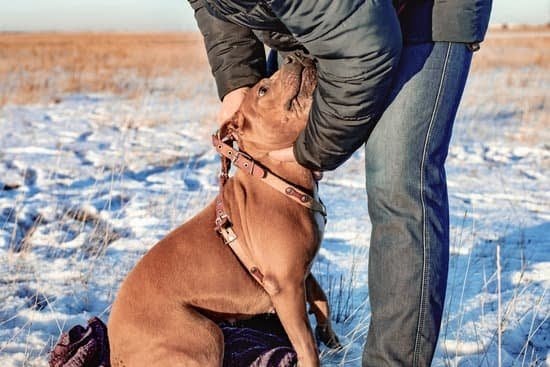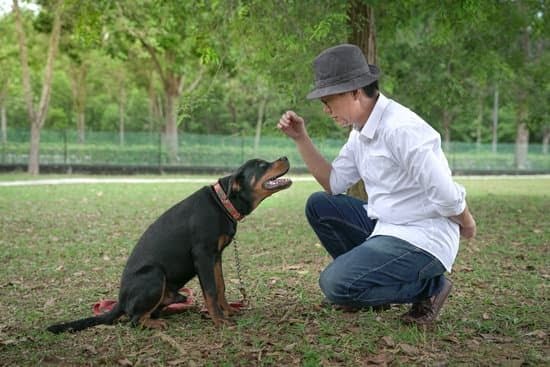Are you struggling with training your dog? If so, you’re in the right place. Today we’ll discuss how to train a dog easily by providing easy and practical tips and techniques for simple and effective dog training.
Training your furry friend is not only beneficial for their behavior and well-being but also for your own. In this article, we will explore different methods of training, setting realistic goals, establishing a consistent routine, using positive reinforcement, addressing common challenges, and seeking professional help when needed.
Understanding the importance of training your dog is crucial for both the owner and the pet. Training can have a significant impact on your dog’s behavior and well-being, making them more obedient and better-behaved companions. Additionally, a well-trained dog can bring immense joy and satisfaction to any pet owner.
Choosing the right training method is key to successfully training your dog. Positive reinforcement, clicker training, and obedience training are just some of the methods we’ll discuss in this article. By understanding these different options, you can choose the best method that suits your dog’s personality and temperament for optimal results in their training journey.
Setting realistic training goals is essential for ensuring progress in your dog’s training. We’ll provide examples of specific training goals for obedience, leash training, and socialization that are achievable yet challenging enough to keep your pet engaged. Furthermore, consistency in executing these goals will be emphasized as an integral part of successful canine education.
Choosing the Right Training Method
When it comes to training your dog, choosing the right training method is crucial in ensuring that the process is effective and enjoyable for both you and your furry companion. There are various training methods available, each with its own set of principles and techniques.
Positive reinforcement, clicker training, and obedience training are some of the most popular approaches. It’s important to consider your dog’s personality and temperament before selecting a method, as this will ultimately determine the success of the training.
Positive reinforcement is a widely favored method that focuses on rewarding desired behaviors with treats or praise. This approach helps to create a positive association with good behavior, making it more likely for your dog to repeat those actions in the future.
Clicker training involves using a small device that makes a clicking sound to mark the moment when your dog performs a desired behavior, followed by giving them their favorite treat as a reward. Obedience training, on the other hand, emphasizes teaching dogs clear commands and rules to establish good behavior.
To choose the best method for your dog, observe their response to different types of rewards and stimuli during short trial sessions. Some dogs may be more motivated by food rewards, while others might respond better to verbal praise or playtime.
Additionally, take into account your own comfort level with each method and consider any specific behavioral issues or challenges that you want to address through training. Ultimately, selecting the right training method will set the stage for successful and fulfilling learning experiences for both you and your canine companion.
Setting Realistic Training Goals
Training a dog is an essential part of responsible pet ownership, as it not only benefits the owner but also positively impacts the dog’s behavior and overall well-being. When embarking on a training journey with your furry friend, it is crucial to set realistic training goals that are achievable and tailored to your dog’s specific needs.
To set realistic training goals for your dog, consider the following tips:
- Assess Your Dog’s Needs: Before setting any training goals, take into account your dog’s personality, breed, age, and any specific behavioral issues that need addressing. Understanding your dog’s individual needs will help you tailor the training goals accordingly.
- Start Small and Build Up: It’s important to start with small, achievable goals and gradually build up to more advanced behaviors or commands. For example, if you’re working on obedience training, begin with simple commands like sit or stay before progressing to more complex tasks.
- Be Patient and Consistent: Rome wasn’t built in a day, and neither is a well-trained dog. Setting realistic training goals involves understanding that progress takes time and consistency. Patience and consistency are key components of successful dog training.
By setting realistic training goals for your dog, you can ensure that both you and your furry companion have a positive experience throughout the training process. Remember to celebrate each milestone achieved by your dog, no matter how small, as every step forward is a step towards a well-behaved and obedient pet.
Establishing a Consistent Training Routine
Consistency is key when it comes to training your dog. Dogs thrive on routine and repetition, so it’s important to establish a consistent training schedule. This means setting aside dedicated time each day for training sessions, as well as integrating training into your everyday activities with your dog. By doing so, you’ll create a structured environment that helps your dog learn and understand what is expected of them.
To establish a consistent training routine, it’s important to find a balance between structured training sessions and informal reinforcement throughout the day. For example, if you’re working on teaching your dog to sit, you can incorporate this command into various daily activities such as mealtime or when greeting visitors at the door. Consistency in using the command will reinforce your dog’s understanding of what is expected in different situations.
It’s also crucial to be patient and persistent during the training process. Remember that every dog learns at their own pace, so it’s important to remain consistent with your expectations and continue providing positive reinforcement for good behavior. With time and dedication, you’ll see the results of your consistent training routine in your dog’s improved behavior and obedience.
| Benefits of Consistent Training | Tips From Article |
|---|---|
| Creates a structured environment for the dog | Set aside dedicated time each day for training sessions |
| Reinforces understanding of commands through repetition | Integrate commands into daily activities for consistency |
| Promotes patience and persistence in both owner and pet | Be patient and persistent during the training process |
Using Positive Reinforcement
When it comes to training your dog, positive reinforcement is a highly effective method that can help you easily teach new behaviors and commands. This training technique involves rewarding your dog for exhibiting the desired behavior, which encourages them to repeat it in the future. Here are some examples of rewards and praise that you can use to motivate and encourage your dog:
- Treats: Small, bite-sized treats that your dog loves can be used as a reward for obeying a command or displaying good behavior.
- Verbal praise: Expressing verbal praise such as “good boy/girl” or using an enthusiastic tone of voice can show your dog that they’ve done something right.
- Physical affection: Many dogs respond well to physical affection, such as petting, belly rubs, or playtime with their favorite toy.
It’s important to remember that consistency is key when using positive reinforcement. Make sure to reward your dog immediately after they exhibit the desired behavior so they can make the connection between the action and the reward.
Overall, using positive reinforcement in your training sessions will create a positive learning experience for your dog and strengthen the bond between you. It’s a gentle and effective way to teach your dog new behaviors while promoting their emotional well-being. By incorporating rewards and praise into your training routine, you’ll find that your dog becomes more eager and willing to learn.
Addressing Common Training Challenges
Dog training is a rewarding experience, but it also comes with its fair share of challenges. One common hurdle that many dog owners face is dealing with stubbornness or distractions during training sessions. In such cases, it’s important to remain patient and persistent, as consistency is key when it comes to overcoming these obstacles.
One effective strategy for addressing stubbornness or distractions is to make training sessions more engaging and fun for your dog. Incorporating interactive toys or treats can help maintain your dog’s focus and motivation during training. Additionally, finding a quiet and familiar environment for training can minimize distractions and increase your dog’s responsiveness to commands.
Another challenge that dog owners often encounter is the difficulty of breaking bad habits in their pets. Whether it’s excessive barking, jumping, or pulling on the leash, addressing these behavioral issues requires time and effort. Implementing positive reinforcement techniques can be particularly effective in this scenario, as it encourages good behavior by rewarding the dog for making the right choices.
Furthermore, enlisting the help of a professional dog trainer can provide valuable assistance in overcoming common training challenges. A certified trainer can offer personalized guidance and support based on your dog’s specific needs, making the training process more effective and efficient.
| Common Training Challenges | Strategies |
|---|---|
| Stubbornness or Distractions | Make training sessions engaging and fun |
| Breaking Bad Habits | Implement positive reinforcement techniques; Enlist the help of a professional trainer |
Training Specific Behaviors
Step-by-Step Instructions for Basic Commands
When it comes to training specific behaviors in your dog, it’s essential to start with the basics. Teaching commands such as sit, stay, and come are fundamental for effective communication and control. For example, to teach your dog to sit, hold a treat close to their nose and then slowly move your hand up, allowing their head to follow the treat and causing their bottom to lower.
As they sit, say the word “sit” and give them the treat. Repeat this process several times a day until they respond consistently when you give the command.
Guidance for Addressing Common Behavioral Issues
In addition to teaching basic commands, addressing common behavioral issues is also crucial in dog training. Many dogs struggle with excessive barking or jumping, which can be frustrating for both the owner and the pet.
To prevent excessive barking, identify the triggers that cause your dog to bark excessively and work on desensitizing them to those triggers through gradual exposure and positive reinforcement. When dealing with jumping behavior, teaching an alternative behavior such as sitting or laying down can redirect their energy in a more desirable way.
Consistency Is Key
Regardless of which specific behaviors you are training your dog for, consistency is key. Consistently using the same commands and methods will help your furry friend understand what you expect from them. Also, remember that patience plays a significant role in training specific behaviors – some dogs might learn faster than others but staying patient throughout the process is crucial for successful training outcomes.
Seeking Professional Help
When it comes to training your dog, seeking professional help can be a valuable option. While many pet owners may feel confident in their ability to train their dog, there are certain situations where the expertise of a certified dog trainer can make a significant difference.
Benefits of Working With a Certified Dog Trainer
Certified dog trainers have undergone extensive education and training in the field of animal behavior and training methods. They possess the knowledge and experience to assess your dog’s specific needs and create a customized training plan. Additionally, working with a professional trainer can provide you with valuable insights and techniques that you may not have considered on your own.
Challenging Behavioral Issues
For pet owners dealing with more complex or challenging behavioral issues, such as aggression or severe anxiety, a certified dog trainer is equipped to address these issues in a safe and effective manner. These professionals understand how to work with dogs exhibiting difficult behaviors and can provide guidance on managing and modifying these behaviors.
Choosing the Right Trainer
When seeking professional help for your dog’s training, it’s important to thoroughly research potential trainers and choose one that aligns with your training philosophy. Look for trainers who use positive reinforcement methods and have experience working with dogs similar to yours. Additionally, consider seeking recommendations from trusted sources, such as veterinarians or other pet owners who have had success with professional trainers.
By considering the benefits of working with a certified dog trainer and choosing the right professional for your needs, you can gain valuable support in overcoming challenging behavioral issues while further enhancing your relationship with your beloved canine companion.
Conclusion
Training your dog can be a rewarding experience for both you and your furry companion. By investing the time and effort into training, you are not only shaping your dog’s behavior and well-being, but also strengthening the bond between the two of you. A well-trained dog is often happier and more confident, leading to a harmonious relationship with their owner and other members of the household.
When it comes to choosing the right training method for your dog, it’s important to consider their personality and temperament. Positive reinforcement techniques, such as using treats or praise to reward good behavior, have been proven effective in cultivating desirable habits in dogs. Additionally, consistency in training is key to achieving success. Establishing a routine that includes regular training sessions will help reinforce learning and ensure that your dog is making progress.
As you embark on this training journey with your dog, it’s crucial to set realistic goals and remain patient throughout the process. Remember that every dog learns at their own pace, so be prepared to adapt your approach as needed. Seek professional help if necessary, especially when dealing with challenging behavioral issues. With dedication, patience, and the right guidance, you can easily train your dog to be well-behaved and obedient.
How to Train a Dog Easily
In conclusion, training your dog is an important and rewarding endeavor that benefits both the dog and the owner. By investing time and effort into training, you can help improve your dog’s behavior, well-being, and overall quality of life. Additionally, a well-trained dog is easier to manage and can have a more positive impact on your daily routines and activities.
Choosing the right training method is crucial for the success of your dog’s training. Positive reinforcement, clicker training, and obedience training are just a few of the methods available. It’s important to consider your dog’s personality and temperament when choosing a method, as this will increase the likelihood of success.
Setting realistic training goals, establishing a consistent routine, using positive reinforcement, addressing common challenges, and seeking professional help when needed are all important components of successful dog training. Remember to be patient and consistent in your efforts, as achieving a well-trained and well-behaved dog is highly rewarding in the long run.
Frequently Asked Questions
What Is the Easiest Way to Train a Dog?
The easiest way to train a dog is through positive reinforcement. This means rewarding good behavior with treats, praise, or toys to encourage the dog to repeat that behavior. Consistency, patience, and clear communication are key elements in training a dog effectively.
What Are the 5 Golden Rules of Dog Training?
The 5 golden rules of dog training include being consistent in your commands and expectations, using positive reinforcement techniques, ensuring proper socialization and exposure to different environments, setting clear boundaries and rules for your dog, and maintaining patience and understanding throughout the training process. Following these rules can help establish a strong foundation for obedience and good behavior in dogs.
What Is the Easiest Trick to Teach a Dog?
One of the easiest tricks to teach a dog is “sit”. This trick involves luring the dog into a sitting position with a treat held above their head and then reinforcing the behavior with positive reinforcement. With consistent practice and rewards, most dogs can quickly learn how to sit on command.

Welcome to the blog! I am a professional dog trainer and have been working with dogs for many years. In this blog, I will be discussing various topics related to dog training, including tips, tricks, and advice. I hope you find this information helpful and informative. Thanks for reading!





